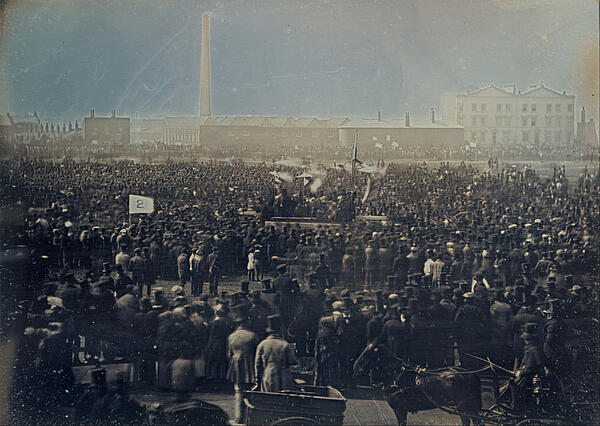Chartism
Despite only being in existence between 1839 and 1848, Chartism was an important movement that attempted to secure greater rights for the working class. The Charter was made up of six political reforms which were:
- The right to vote for all men over the age of 21
- The introduction of the secret ballot
- The removal of property rights to become an MP
- A wage for MPs so that the working class could also work in Parliament
- Equal population size for constituencies
- Annual elections for MPs so that people in Parliament could not abuse their powers

Feargus O'Connor and John Frost were two of the most notable leaders of the Chartism group. They were both very strong willed and were not afraid of using force to have their voices heard. Meanwhile other leaders such as William Lovett took a more peaceful and considered approach to get their points across. The result was a mixed approach that proved somewhat confusing and ineffective.
Petitions was another popular approach used by the Chartists - they believed that gather mass support behind a particular issue would make Parliament sit up and take note. For example, the group collected petitions in 1839, 1842 and 1848, the final one of which got 5 million signatures, but many of these were proved to be fakes - even Queen Victoria's name was on the list! This forgery contributed to the group’s demise.
MLA Citation/Reference
"Chartism". HistoryLearning.com. 2025. Web.
